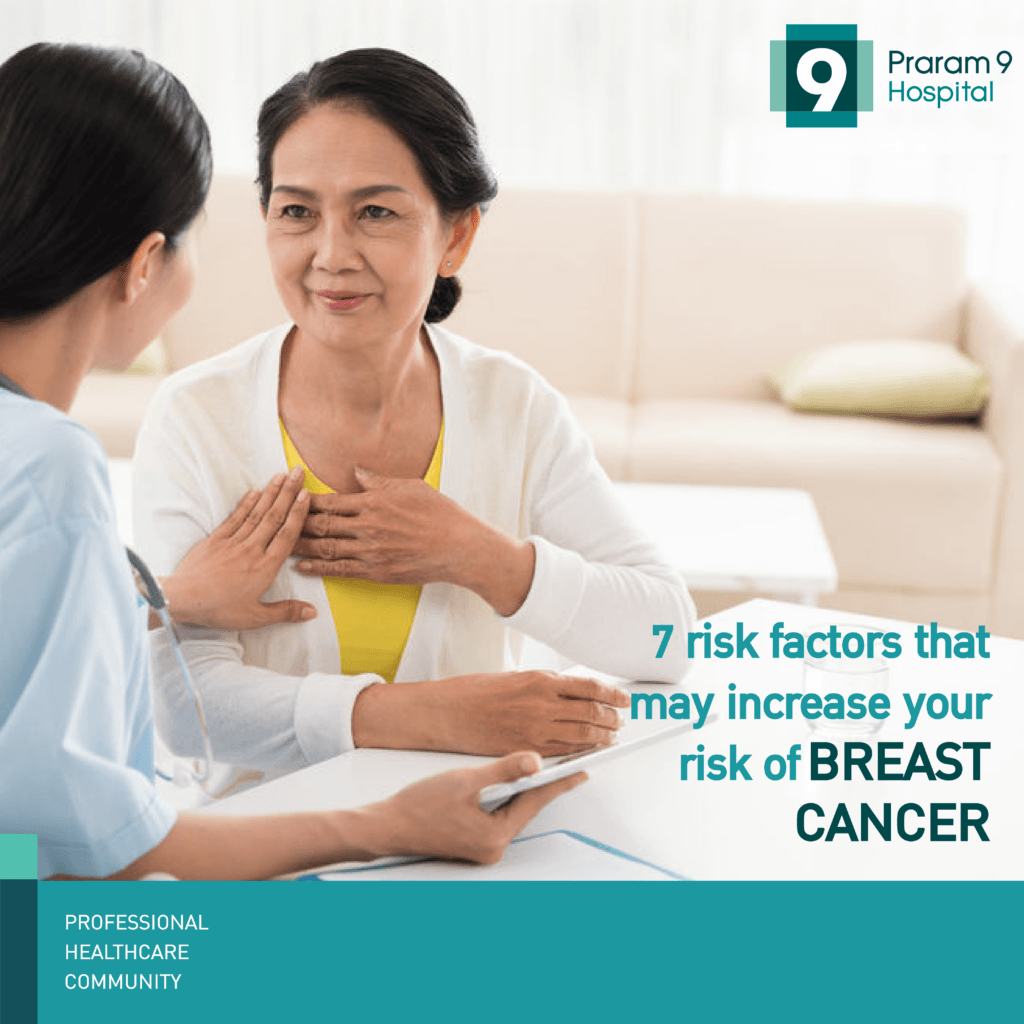Health Articles
Knowledge
7 risk factors that may increase your risk of breast cancer in women

7 risk factors that may increase your risk of breast cancer in women
What is breast cancer?
Breast cancer is a type of cancer found in the breast, can occur in both women and men. It can start of as a lump on the chest and develop into a serious cancer overtime. Symptoms of breast cancer includes changes to the skin around your breast area such as dimpling, redness or scaling, changes to your nipple, a thickening or a lump from your breast. We will discuss the factors that may increase your risk of getting breast cancer that you should be aware of.
Here are 7 risk factors that may increase your risk of breast cancer:
· You age can determine your risk of breast cancer. The risk of getting breast cancer increases with age.
· Family history of breast cancer. Your risk of developing breast cancer will increase if your family members or relatives have had it before. The higher the number of them, the greater the risk of you having it too.
· Diet of high fat. Some studies suggest that diet of high fat may increase your risk of breast cancer. However, we need more studies to confirm the relationship between food and breast cancer and how it affects the risk as well as the risk of recurrence.
· Lifestyle without exercise. People whose lifestyle lack exercise have higher risk of developing breast cancer. Incorporate physical activity in your daily routine may help to decrease your risk of breast cancer.
· Diabetes. Higher risk of getting colorectal cancer are associated with people with diabetes or insulin resistance.
· People with obesity. People who are extremely overweight are more susceptible to developing breast cancer, especially for women after menopause. When the ovaries stop hormone production, fat tissue before the body’s primary source of estrogen and having more fat tissue can increase your risk of breast cancer.
· Exposure to female hormone over long period of time can increase your risk of breast cancer as estrogen which stimulates breast cell growth continues to function which provide opportunity for those breast cell to become cancerous.














